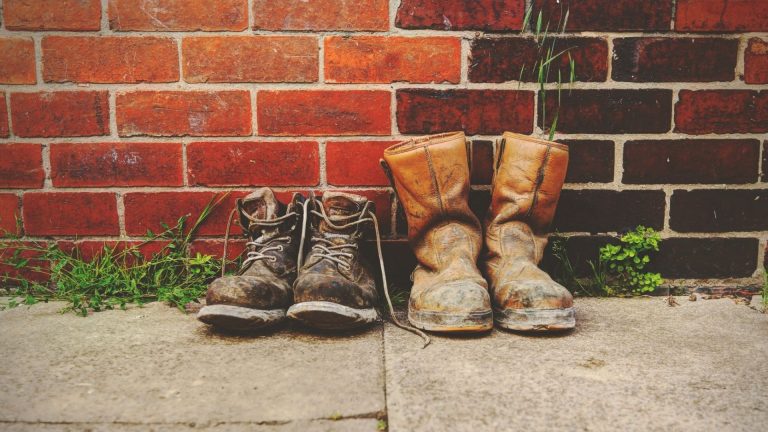Work boots are defined as a pair of durable boots designed to protect the wearer’s feet from falling objects or compression while in the workplace. They are an essential part of an employee who works on a construction site’s PPE (Personal Protection Equipment). At the outset of this article, it is essential to note that different types of work boots are designed for different environments. Therefore, when choosing a new pair of boots, it is necessary to consider your work environment and each pair of boots’ features. Work boots: A brief history Before we consider the different types of boots that are suitable for a construction site, let’s consider a brief history of the work boot. The Popular Mechanics online site notes that “finding the perfect work boots wasn’t always a challenge. The Romans had two choices of sandals: with or without hobnails for traction.” In the early 1800s, workers were provided with a more stable shoe and were offered a choice between buckles and laces. Just after this, shoemakers began to make a left and right shoe for each pair. Finally, steel-toe boots were produced towards the end of WWII. Work boot types: The raison d’etre behind the need for safety boots As the terms “safety boots” and “work boots” infer, the reason for manufacturing and wearing this type of footwear in factories and on construction sites is to protect the wearer’s feet and to prevent injury while on site. There are several different types of work boots, such as steel-capped or steel toe work boots, men’s waterproof work boots, and heavy-duty or lightweight safety boots. One of the most essential choices is between waterproof and non-waterproof footwear. A second fundamental choice that must be made is between lightweight and heavy-duty boots. Both of these choices must be made by considering the work environment as well as their application. The best way to describe how to choose a pair of work boots is to consider the following scenario: Let’s assume that you are a construction worker, and you are working on a building site building a 10-story office block. It is a long-term project, and you work outside in all weather conditions. The question that you are probably considering is: Should I get waterproof work boots? This question is answered as follows: This description of your working conditions dictates that you need a pair of heavy-duty steel toe waterproof work boots like the safety boots stocked by engelbert strauss. In fact, it is essential to have these boots. Any other pair, such as the lightweight waterproof work boots, will not provide enough protection for your feet while walking around the construction site. — To give you an example, imagine you’re in the middle of a local flood, or even at home, and you’re facing such a hectic time. That’ll be the perfect moment to have some top muck boots. Then you’ll be well equipped to overcome that situation safely. But these don’t adapt to every situation as stated before. Caring for your boots Now that you have decided on the right pair of boots to fit your unique requirements, the next point to consider is how to care for your boots. Therefore, the following questions bear relevance: How to waterproof leather work boots? Do you need to spray waterproof boots? Let’s answer these questions by considering each one individually. 1. Waterproofing leather work boots Walking around in wet boots is not ideal. You could end up with a nasty foot infection like Trench Foot. Trench Foot causes blisters, redness and irritation, pain, and numbness, and it can destroy your foot’s skin and tissue to the point where it falls off. Clearly, getting Trench Foot is an untenable situation. The other essential point to note is that even though your boots might be waterproof when you first purchase them, the boots must be maintained and the waterproofing layer renewed; otherwise, it will wear off, and water will seep through the outer layer. Therefore, it is essential to treat your boots regularly with a specially designed wax, paste, or cream such as Dubbin or beeswax. Before you rub this waterproofing treatment on your shoes, it is essential to ensure that your boots are clean. You can buy a cleaning cream that is designed to remove all the dirt and residue from the boots. Once your boots are clean and dry, it is time to apply the waterproofing to each boot. The final step is to take a clean, soft cloth and wipe off the excess wax, cream, or paste. 2. Spraying waterproof boots Boots and shoes can also be waterproofed by spraying a layer of silicone on the outer layer. It is essential to ensure that you don’t spray the boots’ soles with the silicone; otherwise, you might slip and fall when wearing your shoes. Finally, it is essential to note that you don’t need to apply a silicone layer to your boots if you use leather wax, paste, or cream treatment. It is a case of choosing one of these two methods to keep your shoes in good condition, ensuring that they remain waterproof and last a long time.





